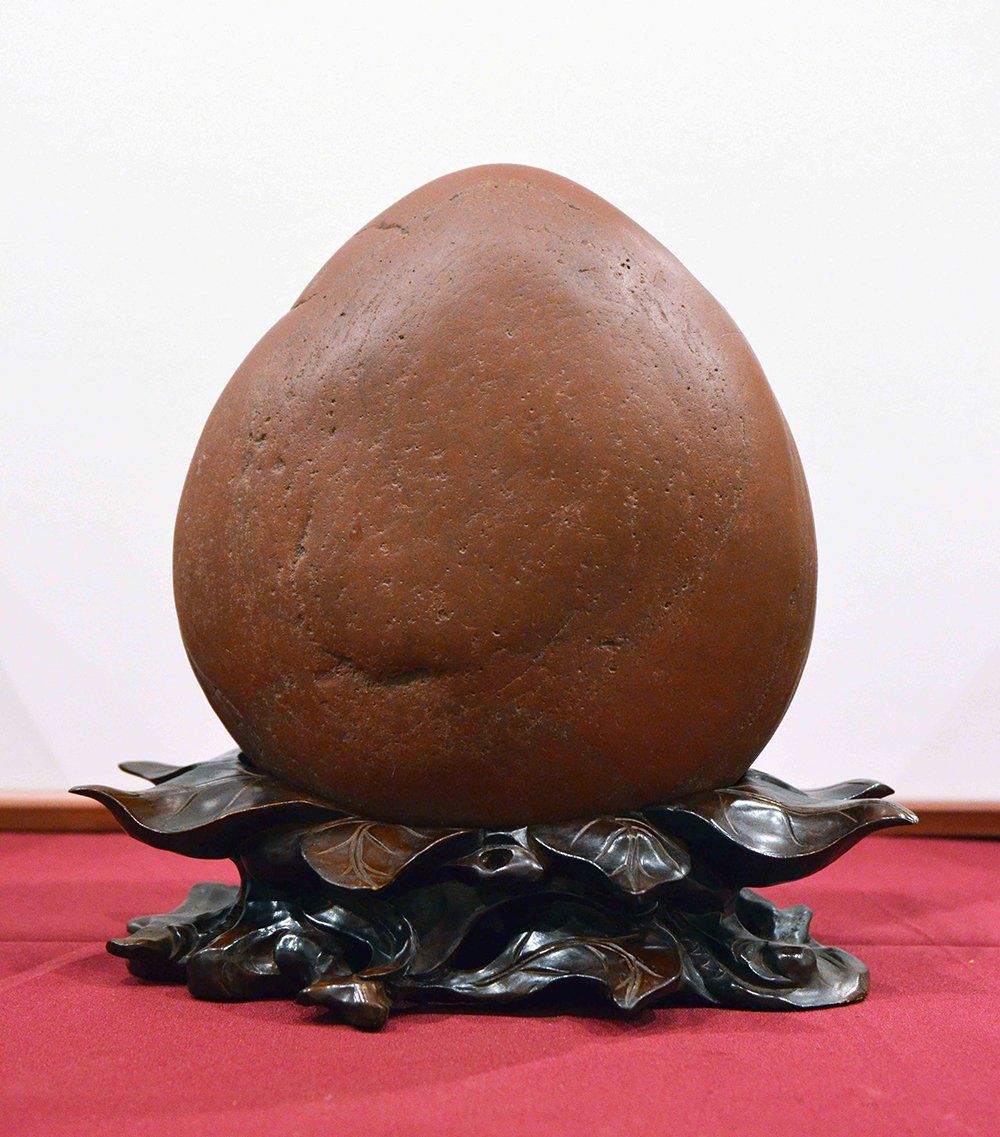How Philosophy and Folklore Have Influenced Wood Base Styles
By Thomas S. Elias, July, 2018
Rounded to ovoid shaped stones, reminiscent of a peach, which has a long and significant history in Chinese culture, are sometimes displayed in bases with definite leaf patterns. These are often viewed by Western stone collectors as cute and possibly outside the traditional Chinese way of displaying stones. They are often dismissed as not being serious viewing stones. This is unfortunate and short-sighted. Such stone can suggest a peach with leaves when held in a base conveying the notion of leaves. Such fruit has great significance in Chinese history.
Large Chinese stone from Guangxi province with an intricately carved wood base with a trunk and leaf motif.
The peach has been a symbol in Chinese art and history for centuries, primarily as an emblem of immortality. The early Taoist priests used the fruit of the peach as a major ingredient in their elixir of life. This elixir was a combination of ingredients, mainly minerals, that would bring immortality. These pills were used by emperors and other high-ranking individuals; however, this practice was eventually abandoned since no one was able to achieve immortality. Some of the minerals used were toxic.
Some varieties of peaches are considered native to present day western China and neighboring countries in southwestern Asia. The golden or yellow peach with fruits the size of goose eggs may have been introduced during the Tang dynasty from Samarkand. There are many legends and tales about the peach in Chinese folklore.
The fruit, flowers and the wood of the peach was intimately associated with other aspects of Chinese culture. Shou Lao, the God of Longevity is often depicted holding a peach in his hand. Small amulets and seals were made of peach wood to ward off demons. Carved peach pits were hung around the necks of children to protect them from evil spirits. Various parts of the peach tree—flowers, fruits, pits, and wood— were used medically to treat coughs and respiratory illnesses.
Japanese concretion resembling a peach with outer layers resembles clasping leaves and with a wood base carved to resemble two additional leaves. This is considered to be an example of a Chinese influence on Japanese base making.
The peach also served as an emblem of marriage. It was considered desirable to be married when the peach flowers were in bloom. The peach flowers were associated with women because the delicate pink blossoms were like the checks of young girls.
By the Qing dynasty, the peach was a common motif in robes, dresses, and in designs on porcelain objects. Thus, the peach was an important aspect of Chinese culture for many centuries. It is then not surprising that viewing stones shaped like peaches are highly regarded by many Chinese stone collectors thus, demonstrating that good stones can represent different aspects of a country’s culture with an importance rivaling that of landscape stones.


